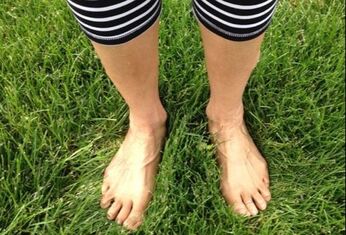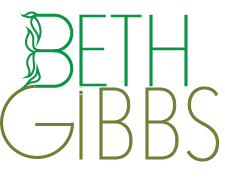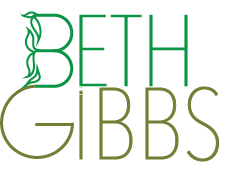ENLIGHTEN UP! a blogSelf-awareness stories: lighting our way to clarity, contentment and resilience in a complicated world.
|
 The word flourish means to blossom, grow and thrive. Trees and plants flourish when they get enough sunlight, fresh air and water. Like trees and plants, we flourish when our needs are met. In 1943, Abraham Maslow, an American psychologist, developed a hierarchy of human needs to be met in the following order:
Having sufficient air, water, food and safety, establishes a personal root system that helps us grow toward positive social connections, self-esteem and self-actualization. Our ability to flourish is possible even when our circumstances for safety and security may be challenging. We start by understanding how to ground. We can think of grounding in two ways. The first is grounding as a quality. Marilyn O’Malley in her Huffington Post article, How to Ground Yourself and Why, writes: “Grounding is a quality, goal or value that connects you to your self, your body, breath and mind and then to the earth. It allows you to be more authentically in your body, in the present moment, and receive nourishing energy.” The second is grounding as a practice. Ram Rao, Ph.D., in his post, Staying Grounded: The Healing Benefits of Earthing Therapy, in the Yoga for Healthy Aging blog states: “Grounding or earthing refers to connecting directly with the earth. It refers to direct skin contact with the surface of the earth, such as with bare feet or hands, or with various grounding systems.” The benefits of grounding either as a quality or a practice can encourage and deepen feelings of safety, security and connection. When you are grounded, you will:
To successfully connect with ourselves, or the earth, we need to inhabit our bodies – no matter their condition or ability. One example of language that sharpens this association is the phrase ‘stand your ground.’ Feeling at home and relaxed in your body can be an indication that you are grounded. However, many of us may not feel at home in our own skin because:
Here’s a personal story. While recovering from an emergency hysterectomy, I had trouble feeling and being ‘in’ my lower body. I lost touch with it. It was there, it functioned and was fully operational with the exception of my missing uterus and ovaries but I couldn’t ‘feel’ it. On the suggestion of my naturopathic doctor, I made an appointment to see an acupuncturist. I explained my problem and instead of inserting needles, he hooked me up to a computer with a series of sensors. The printout and his explanation flabbergasted me. He explained that the surgeon had expertly sewed my physical body back together but my energy body was misaligned and that was why I couldn’t ‘feel’ my lower half. My rational mind told me BS and ‘no way,’ but the graph was clear. Then he inserted needles all over my body (upper and lower) and left me to rest on his table for 20 minutes. During that time I experienced fits of giggles and laughter at nothing in particular. After 20 minutes, he came back, removed the needles and hooked me up to the computer again. This time the graph showed more alignment and I was able to ‘feel’ and fully inhabit my lower body for the first time since the operation. Wow! was all I could think as I drove home. There are many ways to integrate the quality and practice of grounding into our lives to consciously experience internal feelings of safety, security, and connection in spite of our struggles. Those of us able to stand firmly on our own two feet, walk barefoot in the grass or on sand at the beach can experience grounding through a direct connection with the earth. If we are able to transfer from standing to sitting or lying down we connect even more of our body to the earth. But what if you are unable to transfer up and down off the floor or connect your body directly to the ground? What if your feet go no further than wheelchair footrests or if parts of your body are missing due to amputation or surgery? Where there is a will, there is always a way and grounding is possible for anyone and everyone. Research suggests that practicing visualization promotes relaxation, enhances sleep, reduces pain, and increases creativity. So we can use visualization as a grounding practice to increase feelings of safety, security, and connection to self. The Roots Visualization is my favorite practice for grounding. I learned it many years ago from a teacher during my 200-hour yoga training. I still use it to ‘stand my ground’ in stressful situations instead of giving in to my first impulse to flee or freeze. I also practice it when I’m feeling spacey and distracted and need to focus. If parts of your body are missing due to amputation, or removal by surgery, it is important to know that the missing parts are often experienced energetically and this should not prevent anyone from experiencing the benefits of grounding through the practice of visualization. If you need confirmation of this phenomenon, read Matthew Sanford’s book, Waking, a Memoir of Trauma and Transcendence. Matthew is a yoga teacher who was paralyzed from the waist down as the result of a tragic automobile accident when he was 13 years old. Roots Visualization, Instructions 1. If appropriate and accessible, take off your shoes, connect your bare feet to the ground and close your eyes. 2. If you find yourself in a situation, place, or time where you cannot take off your shoes or close your eyes, direct your attention to your legs and feet to sense a deeper contact to the earth, floor, or wheelchair footrests beneath you. 3. Begin to visualize roots growing from your body, starting from the base of the spine. Feel roots reaching down through your legs through the bottoms of your feet to pierce through the earth’s crust. 4. Visualize your roots branching and spreading, growing stronger and reaching deeper into the earth. Sense the strength, support, and the stability that your branching roots send back to fill your entire body. 5. With each inhale, begin to draw in strength, support, and stability and allow that feeling to deepen your connection to the physical world and your place in it. 6. Draw the quality of grounding through the bones of your feet and legs to the base of your spine and all the way up to the crown of your head. Feel your entire body safe, secure, stable and connected to the physical world allowing you to stand your ground and speak your truth. As you do this you may feel some tingling or pulsing in your feet and legs. That’s a good thing because energy flows where intention goes. You can shorten or lengthen the visualization as needed. When you attune yourself to your need in the moment you can stand your ground assertively, appropriately, and confidently.
1 Comment
Your comment will be posted after it is approved.
Leave a Reply. |
Archives
July 2024
AuthorBETH GIBBS started her yoga practice in 1968, four months after her son was born and she’s been practicing ever since. She currently teaches all levels therapeutic yoga classes for adults, and specialty classes for seniors in the Hartford, Connecticut area. Beth is a certified yoga therapist through the International Association of Yoga Therapists and is guest faculty at the Kripalu School of Integrative Yoga Therapy. She writes for the blogs, Yoga for Healthy Aging, and Accessible Yoga. Her master’s degree from Lesley University in Cambridge, MA is in Yoga Therapy and Mind/Body Health. Categories |
|
|
Enlighten Up! a Blog
|
Copyright © 2023 Beth Gibbs

 RSS Feed
RSS Feed
